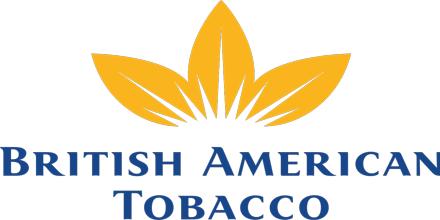Corporate Strategy of British American Tobacco Bangladesh
British American Tobacco Bangladesh Company Limited is a subsidiary of British American Tobacco and is one of the 68 countries in which BAT has manufacturing plants. It is one of the oldest and largest multinational companies operating in Bangladesh. Based in Dhaka it has one cigarette factory in Dhaka and one leaf-processing factory in Kushtia. The company currently employs around 200 managers and 1000 employees.
Listed both on the Dhaka and Chittagong stock exchanges, BATB is the leading company in terms of capitalization at 7.93% of total market capitalization.
BATB started its journey as Imperial Tobacco Company limited in the then undivided India in 1910. After the partition of India, PTC (Pakistan Tobacco Company limited) was established in 1949 to meet the demand for cigarettes of whole of Pakistan.
After independence in 1971 Bangladesh Tobacco Company Limited (BTC) was incorporated on 2.2.1972 as a private limited company with only three shareholders of Tk.1000 each-2 from BAT and 1 from the government.
BTC has always been a part of BAT and in line with the global identity change, BTC was later named as British American Tobacco Bangladesh Company Limited (BATB) in 1998.
British American Tobacco Bangladesh is involved in various community development programs in the country. The company is also one of the highest taxpayers in the country.
- The company contributes more than Tk 12000 million to government annually (largest private sector taxpayer)
- Since the inception of its afforestation program in 1980 the company till date has planted and distributed 38 million trees across the country with a sapling survival rate exceeding 91%.
- Supports Shandhani (posthumous eye donation) and the Centre for the Rehabilitation of the Paralysed as well as other charitable development organisations.
- Is involved in vegetable seed multiplication program .
- In national disasters the company has been prompt in lending timely support to people of the affected regions.
- Is committed to develop backward linkage industries for the cigarette industry, leading to significant improvements in the packaging industry.
- Committed to rural wealth and hygiene improvements through concerted activities in rural areas.
British American Tobacco Bangladesh has won many awards during the last 30 years. Among the awards won are the 1st Prize of Prime Minister’s National Award on Tree Plantation 99, Prime Minister Afforestation Award in 1993, Presidents Award in Agriculture in 1975, FAO Award in 1999 and the National Export Trophy award in 2000.
Human Resources
The Human Resources department bears primary responsibility for creating and sustaining a winning workforce for BAT Bangladesh. What this means is providing opportunities for talented employees to feel the satisfaction and fulfillment gained through being members of a responsible, winning organisation; where they are respected, rewarded and recognised; where their efforts are encouraged; where their careers are developed; where they understand the vision and strategy of the company; and they know where they fit into the bigger picture.
The Human Resources department bears primary responsibility for creating and sustaining a winning workforce for BAT Bangladesh. What this means is providing opportunities for talented employees to feel the satisfaction and fulfillment gained through being members of a responsible, winning organisation; where they are respected, rewarded and recognized; where their efforts are encouraged; where their careers are developed; where they understand the vision and strategy of the company; and they know where they fit into the bigger picture.
The HR function within BAT Bangladesh takes care of three broad areas:
- Organizational development
- Reward
- Talent sourcing
- Employee relations
Marketing
At British American Tobacco Bangladesh, informed adult consumers are at the centre of our interest. Marketing in the tobacco industry requires more focus, more acumen and most importantly a clearer sense of responsibility than in any other industry. We expect our marketing team to have the ability to differentiate our marketing initiatives, to manage productive and profitable relationships with our key accounts, to integrate strategies above and below-the-line and to be innovative – while always behaving responsibly, which is a fundamental philosophy in our marketing challenge.
Marketing operations at British American Tobacco Bangladesh include a range of activities like Brand management, Trade marketing and distribution etc.
Finance
In a competitive business environment, a commercially astute finance function is critical for making good business decisions – for example – about which brands or countries to invest in, in evaluating and improving returns.
Finance managers within BATB are part of the decision-making team, a business partner who is consulted and involved day to day, not merely reporting results and setting budgets.
Finance department’s activities of BATB include:
- Setting and delivering against financial objectives.
- Planning and budgeting for optimal use of resources to grow the business and to satisfy the shareholders’ expectations.
- Management reporting to the board on business performance, current and future.
- Statutory reporting and support of investor relations.
- Audit and business risk management.
- Acting as a value adding business partner to all functions.
Nature of corporate strategy
Corporate strategy is supposed to be the means by which an organization achieves and sustains success. Yet, it rarely rises to that level, despite an abundance of corporate strategy theory and significant research from many organizations over the past few decades. The changes over the years are considered in the form of small, theoretical refinements, rather than large and significant steps required for further management transition
The original meaning of the word strategy derives from the Geek strategia, which is used in the military terms and represents the ability to employ available resources to win a war. This interpretation has generated problems when such concept is used in a business context because it implies the existence, even the necessity, of opponents. As a result, most managers believed that a corporate strategy implies a strong focus on competition, since competition takes place almost exclusively at the offering level; most organizations concentrate their strategic efforts on constantly improving the goods and services they offer. This overemphasis on the temporary success, however, can often obscure the kind of thinking and emphasis that would lead to sustained success, even a continuous repetition of temporary successes doesn’t equate to sustainable strategy. In an effort to increase the value of single offerings, the organisation may be distracted from larger questions of structure, mission and objective (Papers4you.com, 2006).
In war, objectives can often be clearly defined, and so strategy is thought of as a means to a specific end. This view has persisted in the corporate world where strategies are conceived as plans to accomplish specific goals. Although corporate strategy can be very goal-oriented, especially in the early stages of a company’s development, the very nature of goals implies temporary success. By contrast, sustainable success is not, and cannot be an end unto itself or a goal to achieve. Therefore, goal orientation becomes arguably inappropriate when success has to be indefinitely sustained.
Despite this, an overwhelming number of top executives and researchers make extensive use of objectives in their quest of lasting corporate success. Certainly, a number of factors contribute to this: the need of leaders with limited tenure to point to achievements, the tyranny of meeting the expectations of the financial markets and most management teams extensively rely on forecasting and planning. Still, the idea held by most managers that strategy itself is all about goal achievement only exacerbates the situation. Therefore, it is important for strategists to remember that the more specific an objective, the further away it may potentially lead the organization from its optimal big picture.
So how strategy should be redefined? Clearly it cannot rely too strongly on objectives nor can it focus too heavily on competition. A more fundamental concept is needed to guide an organization in seeing its big picture, and such concept should be customer. To create sustainable, long-term success, an organization must first and fundamentally understand and relate to its customers. It is the ongoing encouragement of this understanding, based on neither specific competitors nor temporal objectives, which must be at the heart of any real strategy. And it is that from which all objectives should naturally flow.
Operation
Operations function is at the heart of our business, so we invest substantially in people and technology to ensure that our processes are state-of-the-art, highly flexible and responsive to the needs of our customers and consumers alike that helps us to retain customer.
Working in operations means constantly having to balance the demands of availability, quality and cost. Our people operate in a high speed environment and under tremendous pressure, so they need the strength of mind to make quick decisions, often basing them on limited information. They also need to be open to innovative solutions that can improve our processes. The three major components of our Operations department are:
Green Leaf Threshing Plant (GLTP): The company’s GLTP, set up in 1994, is in Kushtia. It prepares the green tobacco leaf procured by our Leaf team for further processing and manufacturing.
Primary Manufacturing Department (PMD) is responsible for further conditioning of the tobacco to make it ready for production at any time, at any environment.
Secondary Manufacturing Department (SMD) uses the tobacco, which is blended and conditioned by PMD, along with wrapping materials, to manufacture cigarettes.
Apart from producing a wide range of brands and SKUs, the department also takes care of security, procurement, logistics, technical maintenance, process and quality control, employee relations, and other aspects of the business. One significant aspect of our operations is the effort to ensure a working environment which complies with world-class Environment, Health and Safety (EHS) standards. A number of Zero Accident Awards from the BAT group head quarters stand testimony to the success in this regard.
Legal
The major activities of Legal and Secretarial includes litigation management, combat-illicit trade, trade marks & agreement management, in-house legal counsel, share management which is listed with two stock exchanges and operating under central depository system, company secretarial function, records management, shaping regulatory environment, trust fund management, policy compliance etc. Legal and Secretarial function also drives to ensure Corporate Governance in the company.
Existing Program of BATB
British American Tobacco Bangladesh offers very attractive international experiences for its people. Among the British American Tobacco group companies, BAT Bangladesh is well recognised and appreciated for the talent, energy and commitment of its employees. As recognition of this, a number o BAT Bangladesh Managers have been assigned to different BAT companies around the world. Please place the mouse cursor on the dots in the map below for a few such examples. They create a winning environment by doing things differently, utilizing everything they learn from practices around their world. A clear set of Employment Principles, which work in practice globally, unites us and demonstrates their commitment to making this a ‘great place to be’. They are guided by a set of employment principles that makes them the ‘Employer of Choice’ among many potential employees.
Future Program of BATB
Their future program is to achieve leadership of the global tobacco industry in order to create long term shareholder value. Leadership is not an end in itself, but a company that leads its industry, is the preferred partner for key stakeholders and is seen to have a sustainable business, should be valued more highly.
They define leadership in both a quantitative and qualitative sense. Quantitively, they seek volume leadership among their international competitors and in the longer term, value leadership.
But the hard, quantitative measures do not in themselves address all the things they must do as a company. They take a long term view, focusing on the quality of their business and how they work. As a result, qualitatively, they seek to be recognised as industry leaders and to be the partner of first choice for governments, NGOs, investors and potential employees.
In order to deliver otheir future plan, their strategy for creating shareholder value has four elements around which all our efforts revolve – Growth, Productivity, Responsibility and Winning Organisation.
Strategic performance evaluation methods
An organization needs constantly to take stock of its workforce and to assess its performance in existing jobs for three reasons:
- To improve organizational performance via improving the performance of individual contributors (should be an automatic process in the case of good managers, but (about annually) two key questions should be posed:
- what has been done to improve the performance of a person last year?
- and what can be done to improve his or her performance in the year to come?).
- To identify potential, i.e. to recognize existing talent and to use that to fill vacancies higher in the organization or to transfer individuals into jobs where better use can be made of their abilities or developing skills.
- To provide an equitable method of linking payment to performance where there are no numerical criteria (often this salary performance review takes place about three months later and is kept quite separate from 1. and 2. but is based on the same assessment).
In BATB, on-the-spot managers and supervisors, not HR staffs, carry out evaluations. The personnel role is usually that of:
- Advising top management of the principles and objectives of an evaluation system and designing it for particular organizations and environments.
- Developing systems appropriately in consultation with managers, supervisors and staff representatives. Securing the involvement and cooperation of appraisers and those to be appraised.
- Assistance in the setting of objective standards of evaluation / assessment, for example:
- Defining targets for achievement;
- Explaining how to quantify and agree objectives;
- Introducing self-assessment
- Eliminating complexity and duplication.
- Publicizing the purposes of the exercise and explaining to staff how the system will be used.
- Organizing and establishing the necessary training of managers and supervisors who will carry out the actual evaluations/ appraisals. Not only training in principles and procedures but also in the human relations skills necessary. (Lack of confidence in their own ability to handle situations of poor performance is the main weakness of assessors.)
- Monitoring the scheme – ensuring it does not fall into disuse, following up on training/job exchange etc. recommendations, reminding managers of their responsibilities.
Basically an evaluation / appraisal scheme is a formalization of what is done in a more casual manner anyway (e.g. if there is a vacancy, discussion about internal moves and internal attempts to put square pegs into ‘squarer holes’ are both the results of casual evaluation). BATB is always trying to search out and build the talents within the organization. The managers approve merit payment and that too calls for evaluation. Made a standard routine task, it aids the development of talent, warns the inefficient or uncaring and can be an effective form of motivation.
Strategic collective bargaining process
Collective bargaining process is a continuous process. A collective bargaining agent should do the following things:
- Provide assistance in setting strategic bargaining objectives and lead Employer caucus discussions.
- Draft contract language.
- Act as chief spokesperson and lead the conduct of collective bargaining in accordance with strategic objectives.
- Provide an effective liaison and interface with government in order to facilitate the development of mandates and to ensure adequate funding on behalf of the participating organizations.
- Represent member organizations at conciliation.
- Provide support in strike planning and strike management activities.
The human resources staff of BATB provides the following services by way of support to the collective bargaining process:
- Maintain collective agreement wording, wage comparison information and relevant comparator collective agreements in a database.
- Prepare comprehensive research on wages and benefits and current issues in order to adequately support collective bargaining activities.
- Develop a collective agreement costing program in order to estimate the monetary impact of collective agreement changes
The Human Resources Consultant also provide day-to-day labor relations and legal advice to the member facility as follows:
- Advise and assist members in the day-to-day interpretation and application of the language of collective agreements.
- Research and provide legal opinions on a wide variety of labor relations issues.
- Represent clients at various meetings with Union representatives, government officials and representatives of other industries.
Provide orientation and education for managers on the application and interpretation of collective agreement provisions when requested by a participating organization.
Conclusion
BATB’s overall approach to productivity is about using their global resources to increase profits and generate funds for reinvesting in their business in the global arena.
Today, all companies are trying to cut costs. Their approach is integrated – aiming to establish a lower cost base while improving the quality of products and the speed they get to the market, as well as their effectiveness in terms of how they deploy their people and capital.
To remain competitive, it’s important to reduce the complexity and costs across their entire supply chain, while also improving our service to retailers and ensuring product freshness and integrity. They have programmes in place to find reductions in their Overheads and Indirects (anything they spend money on other than leaf, wrapping materials, cigarette making machinery and permanent labour costs) and make the most of their global buying power.
As a Group focused on their consumers, marketing is a large part of what they do and they are working to ensure they effectively and efficiently deploy their marketing resources.
In order to maintain a strong balance sheet, capital effectiveness is an important part of their productivity strategy and includes a focus on inventory levels, utilising their assets, financing and other uses of capital.
















